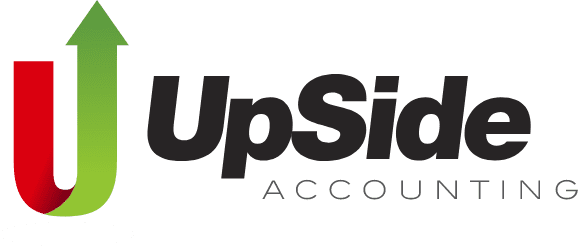Confused about charging your clients for reimbursable expenses?
As a small business owner or a sub-contractor, you may sometimes have out-of-pocket expenses while carrying out a job for the client. If the expense has been approved to be reclaimed by the client, it’s called a reimbursable expense, and should be added to your invoice along with the service you provided. Keep reading to learn more about reimbursable expenses and how to bill your clients for them.
What expenses are reimbursable?
Figuring out what’s a billable expense can be complicated when you’re first starting out. Too many small businesses and freelancers have made the mistake of not charging clients for expenses they’ve incurred to get the job done. This can become a costly issue, so if you find you’re spending more than you’re earning, it’s smart to check your client-related expenses. Whatever your job, it’s common practice to buy things on behalf of others and then pass on those costs later in an invoice, with or without markup. So, which expenses should every business charge their clients for? Every situation is different, but in general, you should ask yourself:
- Is this expense necessary to finish the job?
- Am I incurring this expense on behalf of my client?
- Is it reasonable to charge my client for it?
For example, we have a client who is a security expert. “Jen” consults with large retailers in the U.S. about their security processes, so the client pays for her flight, hotel, transportation, and meals. Jen lists “security consulting” on her customer’s $6000 U.S. invoice, which is separate from the $1250 U.S. reimbursable travel expenses that are itemized on the invoice, with copies of receipts included. In Jen’s case, the reimbursable expenses are in American dollars because the customer is American. The Canada Revenue Agency (CRA) considers these zero-rated for GST/HST purposes (i.e., taxed at the rate of zero per cent) and therefore, no GST/HST applies.
It’s also important to keep track of the supplies you use for projects so that you can properly bill the client for them. Another client of ours, a video producer, creates music videos for large corporations. “John” must deliver his product on a portable hard drive to the Canadian division of an American music label. He buys bulk packs of hard drives for the wholesale price, but charges his clients for the retail price of one portable hard drive ($124 CDN + applicable sales tax). They don’t care, and he makes a bit of a margin on each of the hard drives. John also charges the shipping costs, which includes the envelope or box, packing materials, and the fee he paid to the shipping company.
In real estate, a Statement of Adjustments, as written up by a lawyer, describes all of the costs that the buyer and seller still needs to pay for, including any outstanding Realtor fees for keys, couriers, listing preparation, marketing and other expenses. For the most part, Realtor fees are usually paid by the seller, and the fee is usually subtracted from the proceeds of the sale.
How to Properly Record and Track Expenses
Find out what the client includes as allowed reimbursable expenses, or check the contract before accepting the project. Keep a record of every receipt, just in case, including any small-time expenses you may acquire on your clients’ behalf while working on a project, which were unaccounted for at the beginning. The easiest way to automatically track your expenses—including reimbursable expenses— is to snap a picture of each receipt with your phone and upload it instantly to the cloud via a receipt app like Dext. Make sure to categorize the expense as billable, so you don’t forget to charge the client.
How to Bill Clients for Expenses
Once you’ve marked an expense as billable in your cloud accounting software, it’s a simple matter of creating the invoice and adding it. QuickBooks Online makes it easy by bringing up an ‘Add to Invoice’ (right) sidebar after you choose the client’s name so that you don’t have to search for the transaction. Once you click ‘Add’, the invoice will populate with the information from the expense.
Many clients are happy to pay for extra expenses, as long as they have agreed to the limits upfront. They won’t like being surprised, so make sure to attach an expense report, broken down line by line with details of each expense. What many people don’t realise is that reimbursable expenses are considered income and they still have to charge applicable sales tax (GST/HST) on them. You will need to create a detailed expense report in Excel or Google Sheets, and then attach them to your invoice. Itemize all your expenses and include applicable tax details.
Best Practices for Collecting Reimbursable Expenses
- Agree in advance what kinds of expenses are reimbursable
Ask your client if they have a policy regarding expenses, or have your own expense clause in your contract.
- Itemize expenses and provide evidence
Even if you only have one line item for “expenses” on your invoice, always attach an expense report with copies of the original receipts and details.
- Bill clients sooner, rather than later
Make sure to submit billable expenses along with the final balance that’s due at the end of a project. The sooner you bill your clients, the sooner you get paid. It’s also easier to answer any expense-specific questions.
As a small business owner or a self-employed person, you should always check with your accountant when setting up a system for collecting reimbursable expenses, as they know your particular situation and can give invaluable advice. Incurring expenses on your clients’ behalf is part of running a business, so remember the best practices when you do. Make sure that you agree in advance about what kinds of expenses are reimbursable, properly record the expenses for an accurate expense report, keep copies of receipts, and remember to charge your client ASAP with the applicable sales tax.

